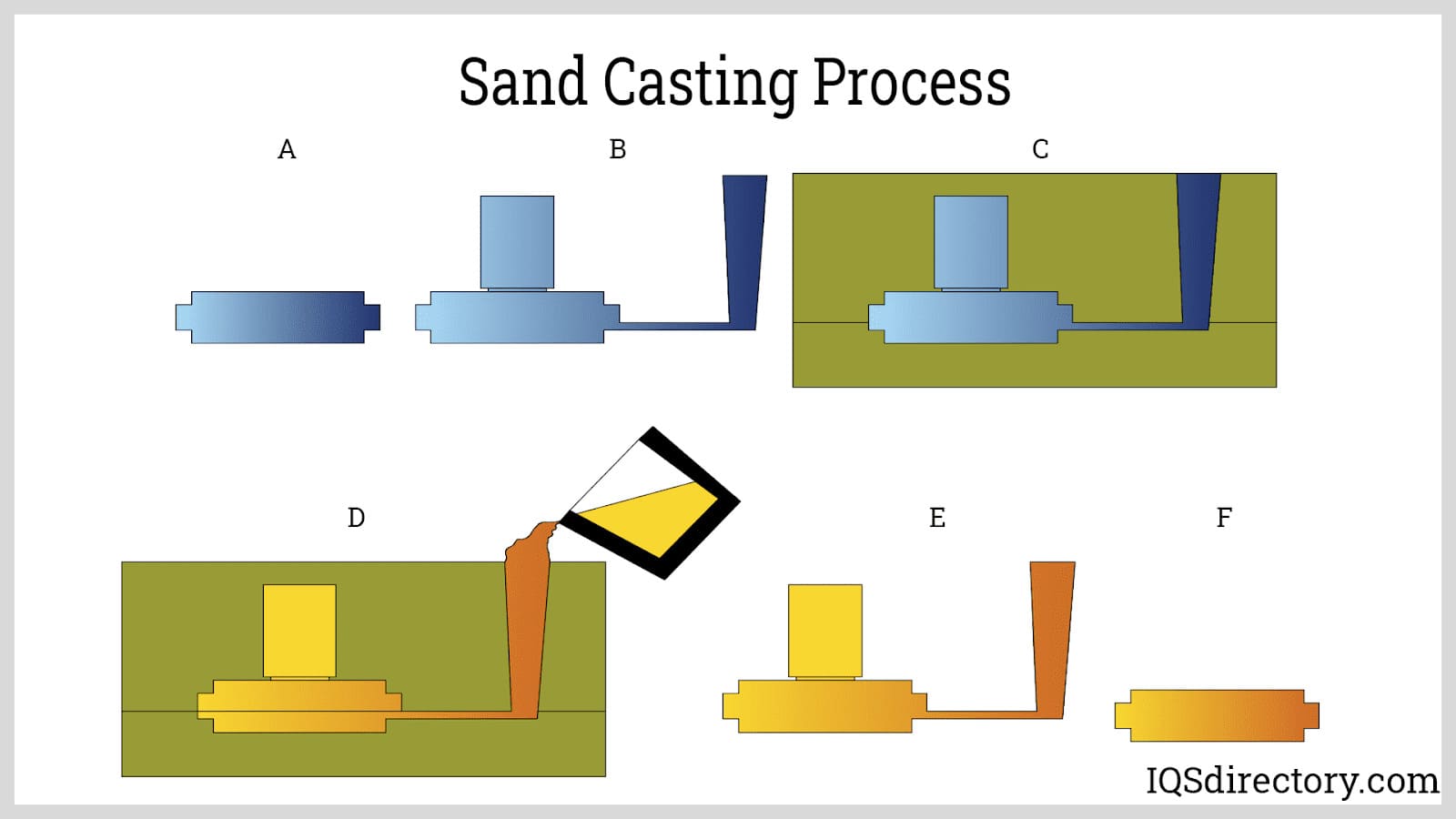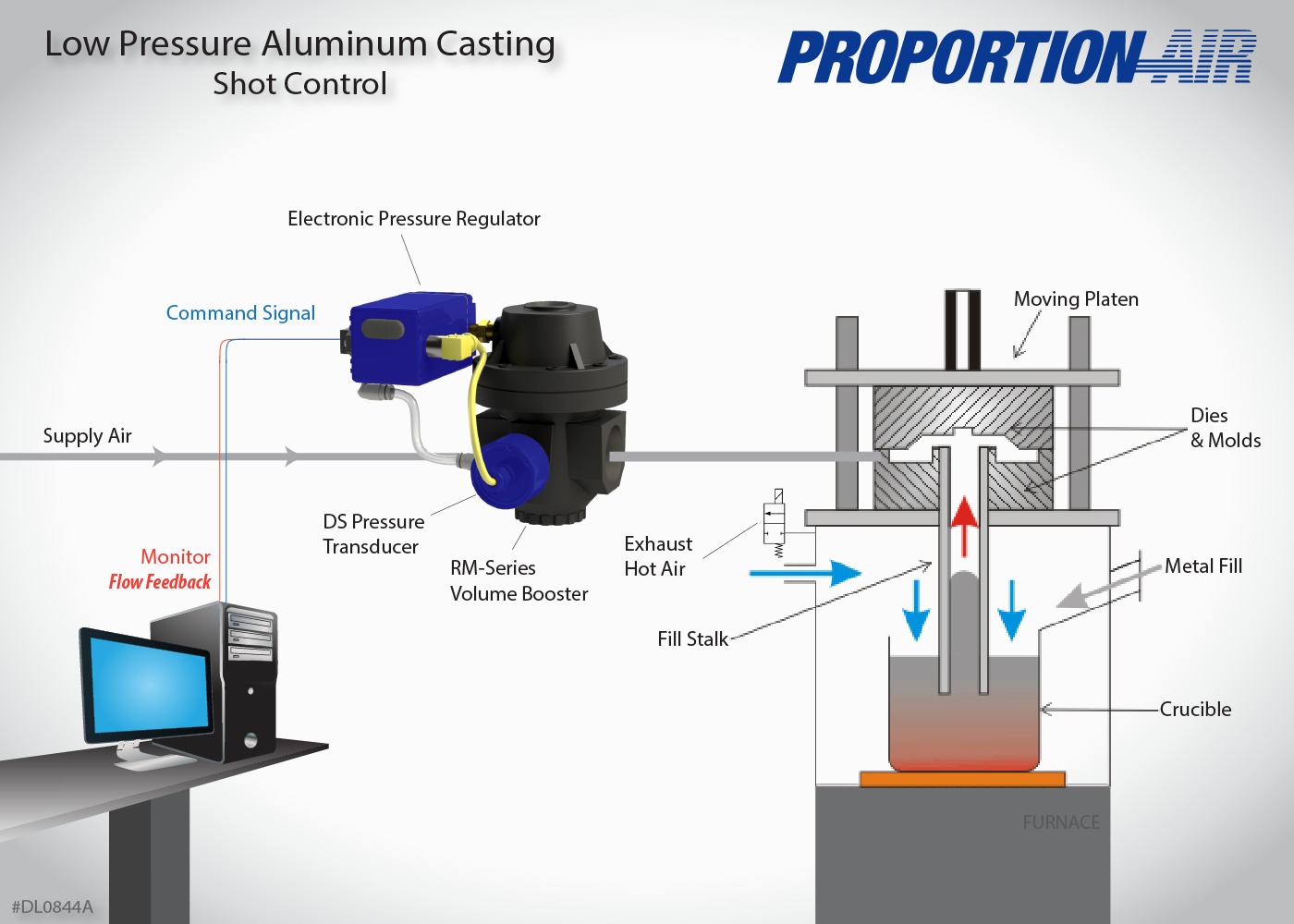Why Aluminum Foundry Wisconsin continues to be vital in casting
How Aluminum Foundry Contributes to Improvements in Aerospace Engineering
Aluminum shops are essential to advancements in aerospace design. They create lightweight, high-strength parts that are necessary for contemporary airplane. Via sophisticated casting techniques, these shops develop complex geometries that improve structural stability. In addition, the development of premium Aluminum alloys supports the sector's focus on gas effectiveness and sustainability. Nevertheless, obstacles continue to be in the manufacturing procedure. Recognizing these elements reveals the extensive impact of Aluminum on aviation's future.
The Value of Lightweight Materials in Aerospace Style
As the aerospace sector remains to progress, the significance of light-weight products becomes significantly evident. The demand for effectiveness and sustainability drives designers to focus on the use of products that decrease general weight without endangering structural stability. Light-weight products, specifically Aluminum, play a necessary role in improving gas efficiency, enhancing payload ability, and enhancing the general efficiency of aircraft.
Furthermore, the integration of these materials permits cutting-edge designs, enabling producers to produce more wind resistant shapes that can endure severe problems. The decrease in weight not only decreases functional prices yet likewise contributes to a decreased ecological impact, aligning with global efforts toward sustainability in aviation.
Advanced Spreading Techniques in Aluminum Foundries
Advanced spreading methods in Aluminum factories play a vital role in aerospace design by enabling the manufacturing of light-weight and specific components. Technologies in mold style and precision casting procedures are essential in achieving ideal efficiency and architectural stability. Furthermore, the development of light-weight alloys improves the overall effectiveness and efficiency of aerospace applications.
Innovative Mold And Mildew Style
Ingenious mold and mildew layout plays an essential duty in the performance and performance of Aluminum shops, particularly within the aerospace industry. By leveraging sophisticated products and strategies, modern molds can be engineered to withstand heats and pressures, making sure peak performance during the casting process. These styles typically integrate complex geometries that permit for the production of light-weight yet structurally sound elements, essential for aerospace applications. In addition, using computer-aided style (CAD) software promotes accurate modeling, allowing foundries to refine and imitate mold and mildew layouts before physical manufacturing starts. This not just enhances the high quality of cast components but likewise minimizes waste and lead times, resulting in significant expense financial savings. Overall, cutting-edge mold and mildew layout is a foundation of progress in Aluminum Foundry technology for aerospace design.
Accuracy Casting Processes
The effectiveness of ingenious mold and mildew designs perfectly incorporates with precision casting procedures, which are important for creating high-quality Aluminum elements in aerospace design. These procedures, including sand spreading, pass away spreading, and investment casting, guarantee the creation of complex geometries with limited resistances. Advanced methods like vacuum cleaner spreading and stress pass away casting improve the integrity and surface coating of the end products. Precision casting lessens product waste while maximizing the mechanical buildings of Aluminum, crucial for aerospace applications. Additionally, using real-time tracking and advanced simulation tools during the spreading procedure enables instant modifications, causing enhanced quality assurance. Collectively, these precision spreading procedures placement Aluminum foundries at the leading edge of aerospace innovation, sustaining the industry's demand for integrity and efficiency.
Light-weight Alloy Development
As aerospace designers look for to improve fuel efficiency and efficiency, light-weight alloy advancement becomes a crucial emphasis in Aluminum foundries. These foundries use sophisticated spreading techniques to create alloys that supply premium strength-to-weight ratios. Developments in alloy composition, consisting of the consolidation of aspects like lithium and magnesium, enable the manufacturing of materials that hold up against extreme problems while lowering general aircraft weight. Strategies such as die casting and financial investment casting promote the precision production of complicated forms, which are important for aerospace applications. Furthermore, ongoing study intends to optimize these alloys for improved mechanical homes and enhanced toughness. By focusing on lightweight alloy development, Aluminum shops greatly add to the development of aerospace engineering, leading the way for more effective and sustainable airplane layouts.

Enhancing Architectural Integrity With Aluminum Elements
Aluminum elements use substantial benefits in improving architectural stability within aerospace engineering. Their lightweight nature adds to general efficiency while maintaining toughness, which is important for aircraft performance. Additionally, the tension resistance properties of Aluminum help assure the toughness and reliability of aerospace frameworks under different operational problems.
Lightweight Material Advantages
While typical products often endanger weight for strength, using Aluminum components in aerospace engineering supplies substantial advantages in structural honesty. Aluminum's light-weight nature adds to general design effectiveness, enabling even more streamlined airplane that eat much less fuel, thereby enhancing sustainability. The material's outstanding strength-to-weight ratio assurances that parts preserve resilience without including unnecessary mass. This top quality cultivates boosted efficiency and agility in flight, as well as maximized haul capabilities. Additionally, Aluminum's resistance to deterioration prolongs the life-span of aerospace frameworks, lowering maintenance costs and enhancing safety and security. As manufacturers significantly take on Aluminum alloys, the aerospace market experiences a transformative change towards much more effective and reliable engineering remedies that prioritize both efficiency and environmental responsibility.
Stress Resistance Residences
Numerous products possess unique residential properties, Aluminum's exceptional stress and anxiety resistance stands out as an important factor in boosting the architectural integrity of aerospace components. This resistance plays an essential role in making sure that aircraft can withstand various functional stress and anxieties, including fatigue, impact, and environmental conditions. Aluminum alloys, especially crafted for aerospace applications, show high tensile toughness while maintaining lightweight attributes, making it possible for designers to design extra efficient frameworks - Aluminum Foundry. In addition, the capability of Aluminum to withstand cyclic loading without considerable deformation adds to the longevity and dependability of aerospace components. As advancements proceed in Aluminum Foundry techniques, the advancement of stress-resistant Aluminum elements promises more improvements in efficiency, safety and security, and performance across the aerospace sector, strengthening Aluminum's role as a favored product in modern design
Fuel Efficiency Improvements Driven by Aluminum Innovations
As the aerospace industry seeks to improve fuel effectiveness, ingenious usages of Aluminum have actually become a necessary solution. Aluminum's light-weight nature notably decreases aircraft weight, enabling reduced fuel usage Get More Info during flight. This reduction in weight is crucial, as also little declines can cause significant enhancements in general fuel economic climate.
Advanced Aluminum alloys, designed for improved toughness and resilience, enable producers to develop parts that maintain structural honesty while lessening mass - Aluminum Foundry. Additionally, the assimilation of Aluminum in airframes and engine elements facilitates boosted aerodynamics, adding to reduced drag and increased performance
The adoption of Aluminum in aerospace not only fulfills the demand for fuel-efficient layout however likewise lines up with regulative pressures for reduced exhausts. As these technologies proceed to progress, they play a significant function that site in establishing brand-new standards for gas effectiveness, making certain that the aerospace industry can satisfy expanding environmental and economic obstacles.

The Role of Aluminum in Sustainable Aeronautics Practices
The boosting focus on lasting aeronautics techniques has actually placed Aluminum as a crucial product in the mission for greener airplane style. Recognized for its light-weight properties, Aluminum considerably decreases aircraft weight, resulting in lower gas consumption and emissions. Its recyclability even more boosts its sustainability account, as Aluminum can be recycled forever without loss of top quality. This characteristic supports a circular economy within the aviation field, decreasing waste and resource exhaustion.
Improvements in Aluminum alloys have boosted their toughness and corrosion resistance, permitting for longer solution life and lowered upkeep requirements. These developments help with the development of extra effective aircraft frameworks, adding to overall sustainability efforts. In addition, Aluminum's thermal conductivity plays a critical duty in energy-efficient designs, boosting systems such as warm exchangers. Jointly, these attributes underscore Aluminum's critical function ahead of time sustainable aviation, lining up with international campaigns intended at decreasing the ecological effect of flight.
Obstacles Dealt With by Aluminum Foundries in Aerospace Manufacturing
While Aluminum factories play a vital role in aerospace production, they deal with significant challenges that can influence manufacturing efficiency and top quality. One major challenge is the rigid quality control requirements called for in the aerospace market. Any defect can jeopardize safety and security and performance, necessitating extensive inspection processes that extend manufacturing timelines. In addition, foundries usually contend with rising and fall basic material costs, which can influence pricing and productivity. The intricacy of Aluminum alloys utilized in aerospace applications more makes complex the manufacturing procedure, as exact formulas are essential for achieving wanted mechanical buildings. Knowledgeable labor scarcities prevent the ability to maintain premium production levels. go to my blog Ecological regulations impose restrictions on exhausts and waste administration, needing foundries to spend in sustainable techniques, which can be cost-prohibitive. These variables collectively develop a landscape where Aluminum factories need to constantly adapt to fulfill the developing needs of aerospace production while making certain safety and security and conformity.
Future Fads in Aluminum Applications for Aerospace Design
With advancements in innovation and raising needs for performance, the future of Aluminum applications in aerospace design is poised for considerable change. The assimilation of ingenious Aluminum alloys and compounds is anticipated to improve strength-to-weight proportions, leading to even more fuel-efficient airplane designs. In addition, innovations in additive manufacturing techniques will certainly enable the manufacturing of intricate Aluminum frameworks that were formerly impossible, optimizing efficiency and lowering waste.

Lasting practices will play a necessary duty, with a growing focus on recycling Aluminum to lessen ecological influence. The aerospace sector is most likely to accept smarter making procedures, such as automation and fabricated knowledge, guaranteeing better and precision in Aluminum components. Additionally, collaborations in between Aluminum foundries and aerospace firms will foster research and development, leading the way for brand-new applications that satisfy the rigorous requirements of modern aerospace design - Aluminum Foundry. On the whole, the future looks guaranteeing for Aluminum's duty in shaping the skies
Frequently Asked Concerns
What Are the Ecological Effects of Aluminum Manufacturing in Aerospace?
The ecological effects of Aluminum production in aerospace consist of substantial energy consumption, greenhouse gas exhausts, and environment disturbance. Furthermore, mining processes can lead to dirt destruction and water contamination, increasing worries regarding sustainability and environmental balance.
Just How Does Aluminum Contrast to Other Products in Aerospace Applications?
Aluminum supplies an one-of-a-kind mix of light-weight residential properties, rust resistance, and cost-effectiveness compared to other products. Its high strength-to-weight proportion makes it especially helpful for aerospace applications, enhancing fuel performance and general efficiency in airplane style.
What Certifications Do Aluminum Foundry Employees Requirement for Aerospace Projects?
Aluminum Foundry employees need specialized training in metallurgy and spreading methods, together with knowledge of aerospace industry criteria. Accreditations in quality assurance and safety methods are also necessary to ensure compliance with rigid aerospace task demands.
Exist Any Safety And Security Worry About Using Aluminum in Aerospace Engineering?
Safety problems pertaining to Aluminum in aerospace engineering consist of vulnerability to deterioration, stress, and tiredness fractures. Proper therapy and alloy choice are important to alleviate these dangers, guaranteeing architectural stability and overall security in aerospace applications.
Just How Does Aluminum Recycling Benefit the Aerospace Market?
Aluminum reusing substantially benefits the aerospace market by lowering material costs, minimizing ecological influence, and preserving energy. This lasting technique enhances the industry's efficiency while promoting the use of lightweight, high-performance components in aircraft manufacturing.
Advanced casting strategies in Aluminum foundries play an essential function in aerospace design by making it possible for the production of lightweight and precise components. Innovative mold and mildew layout plays a crucial duty in the performance and efficiency of Aluminum factories, particularly within the aerospace sector. As aerospace engineers seek to boost gas performance and efficiency, light-weight alloy advancement ends up being a necessary focus in Aluminum foundries. Aluminum alloys, especially crafted for aerospace applications, display high tensile strength while maintaining light-weight attributes, allowing designers to create a lot more efficient frameworks. Partnerships between Aluminum shops and aerospace business will certainly cultivate research study and advancement, paving the means for brand-new applications that fulfill the rigid needs of modern-day aerospace design.